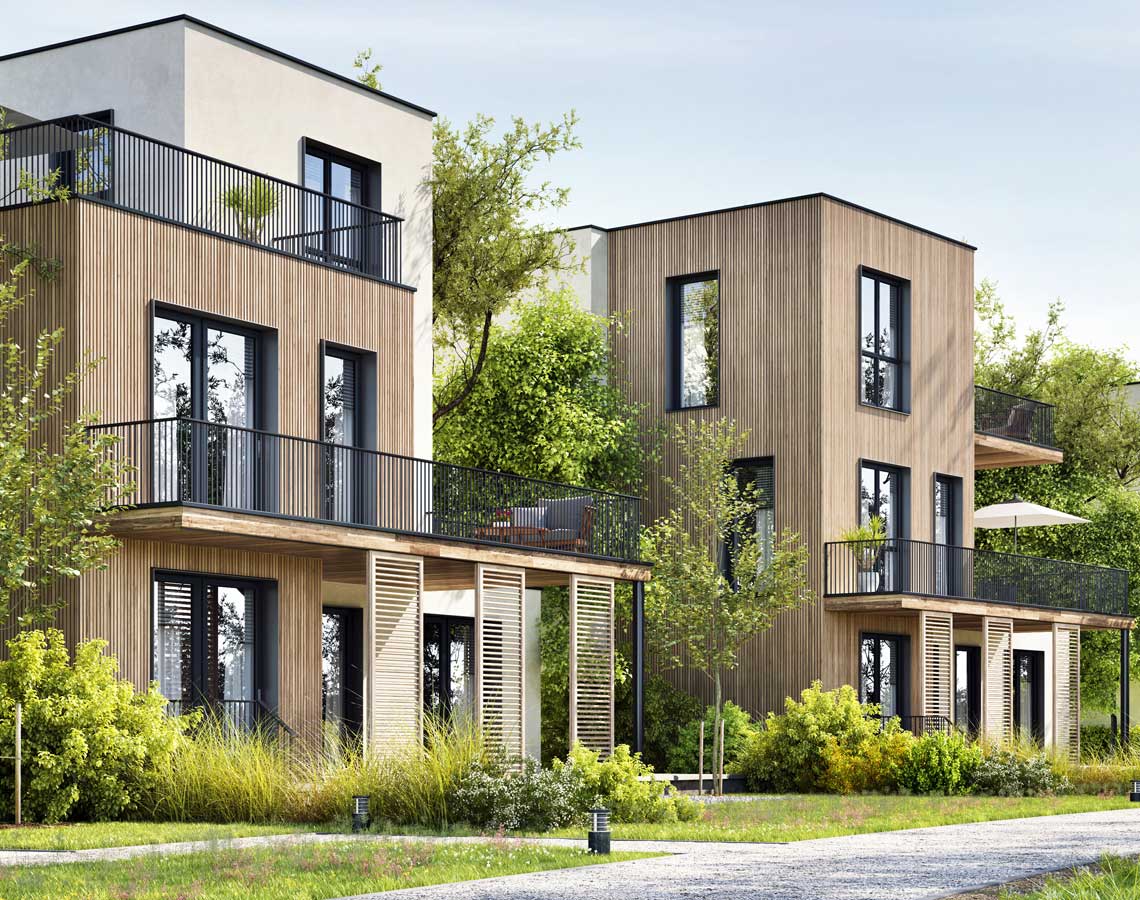Decorative Timber Cladding
Decorative timber cladding has gained popularity in recent years as a versatile and aesthetically pleasing option for enhancing the appearance of both residential and commercial buildings. With its natural beauty and durability, timber cladding offers a range of benefits that make it a preferred choice for architects, designers, and homeowners alike. Let's explore some of the key advantages of decorative timber cladding.
Benefits of Timber Cladding
- Aesthetic appeal: Timber cladding provides a warm and inviting look to any building. Its natural grains, textures, and colour variations add a touch of elegance and character, creating a visually appealing façade. Whether used in contemporary or traditional designs, timber cladding can complement various architectural styles and enhance the overall aesthetics of a structure.
- Sustainability: Timber is a renewable resource, and responsibly sourced timber cladding is an environmentally friendly choice. Wood is a carbon-neutral material, meaning it absorbs and stores carbon dioxide throughout its lifespan, helping to mitigate climate change. Opting for timber cladding promotes sustainable building practices and reduces the environmental impact of construction.
- Insulation and energy efficiency: Timber cladding provides excellent thermal insulation properties, helping to regulate indoor temperatures. It acts as a natural insulator, reducing heat transfer through the walls and minimizing energy consumption for heating or cooling. By improving the energy efficiency of a building, timber cladding contributes to lower utility bills and a reduced carbon footprint.
- Durability and longevity: High-quality timber cladding, when properly maintained, can last for decades. Timber species like cedar, oak, and larch have natural resistance to decay and insects, making them highly durable. With appropriate protective finishes and regular maintenance, timber cladding can withstand various weather conditions, including UV exposure, rain, and wind, without warping or deteriorating.
- Versatility and customization: Timber cladding offers a wide range of design options and can be customized to suit individual preferences. It can be cut into different shapes, sizes, and profiles, allowing for creative and unique installations. Additionally, timber can be stained, painted, or left untreated to preserve its natural appearance, providing endless design possibilities for architects and homeowners.
- Easy installation and maintenance: Timber cladding is relatively lightweight compared to other cladding materials, making it easier to handle and install. It can be fixed directly to the building's structure or attached to a subframe, depending on the specific requirements. Additionally, regular maintenance involves simple tasks like cleaning and applying protective coatings to preserve the timber's integrity and appearance.
- Acoustic properties: Timber has excellent acoustic properties, making it an effective solution for noise reduction. It can absorb and dampen sound vibrations, helping to create a quieter and more comfortable indoor environment. Timber cladding can be particularly beneficial in urban areas or buildings located near noisy roads, airports, or railways.
- Health and well-being: Wood has been proven to have a positive impact on human well-being. The natural presence of wood in the built environment has been linked to stress reduction, improved mood, and increased productivity. By incorporating timber cladding into interior spaces, such as feature walls or ceiling treatments, one can create a calming and soothing ambiance.
Decorative timber cladding offers numerous advantages that make it a desirable choice for enhancing the appearance and performance of buildings. From its aesthetic appeal and sustainability to its insulation properties and longevity, timber cladding provides a versatile and customizable solution. Whether used in residential or commercial projects, timber cladding adds a touch of natural beauty and warmth while contributing to energy efficiency and a sustainable future.
